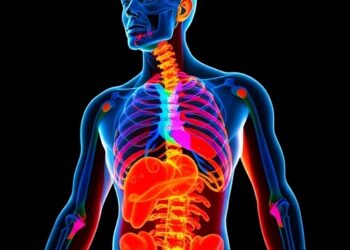A Position paper published by the International Osteoporosis Foundation (IOF) Working Group on Epidemiology and Quality of Life [1] addresses the ongoing debate about the necessity and impact of incorporating race and ethnicity adjustments in clinical algorithms. It responds specifically to the recent American Society of Bone and Mineral Research (ASBMR) Task Force report on Clinical Algorithms for Fracture Risk [2] that recommends that FRAX® models for the US do not include adjustment for race and ethnicity.
A Position paper published by the International Osteoporosis Foundation (IOF) Working Group on Epidemiology and Quality of Life [1] addresses the ongoing debate about the necessity and impact of incorporating race and ethnicity adjustments in clinical algorithms. It responds specifically to the recent American Society of Bone and Mineral Research (ASBMR) Task Force report on Clinical Algorithms for Fracture Risk [2] that recommends that FRAX® models for the US do not include adjustment for race and ethnicity.
FRAX® is a computer-based algorithm that integrates clinical information in a quantitative manner to predict a 10-year probability of major osteoporotic fracture for both women and men in different countries. It is the most widely used fracture risk assessment tool, incorporated into more than 80 national and regional guidelines worldwide.
The Position paper argues that single race-agnostic FRAX model for the US would unfairly discriminate against the Black, Asian and Hispanic communities and recommends the retention of ethnic and race-specific FRAX models for the US, preferably with updated data on fracture and death hazards. This view is endorsed by the IOF Board and the European Society for Clinical and Economic Aspects of Osteoporosis, Osteoarthritis and Musculoskeletal Diseases (ESCEO).
Professor John Kanis, Lead author and Co-Chair of the IOF Working Group on Epidemiology and Quality of Life, noted, “The well-documented inequity of care in the US is an important issue that should be addressed. However, a single race-agnostic FRAX model for the US would not address inequities. Instead, it would significantly decrease the accuracy of the fracture risk assessment tool. This would potentially lead to non-White individuals receiving unnecessary treatments – and thus ultimately serves to exacerbate health inequities.”
The Position paper’s key messages include:
- The inclusion of race and ethnicity in FRAX is backed by robust statistical evidence showing lower fracture probabilities in non-White populations compared to White populations. For example, in the US, rates of hip fracture in the Black community are up to 70% lower than in White women, and rates of major osteoporotic fractures are between 49 and 67% lower.
- A single race-agnostic FRAX model for the US would decrease the performance characteristics of FRAX – by at least as much as omitting a prior fracture as an input variable.
- The use of a race-agnostic FRAX model unfairly discriminates against the Black, Asian and Hispanic communities in the US.
- Implementing race and ethnicity adjustments in FRAX helps address and reduce health disparities by ensuring that non-White individuals are not subjected to unnecessary treatments and the risk of potential adverse events without clinical gain.
- The significance of ethnicities varies by geography. The ratios of fracture incidence between ethnic and racial groups in the US do not apply to other geographies.
Professor Nicholas Harvey, IOF President and member of the IOF Working Group, stated, “This Position paper reflects the collective expertise of leading professionals in osteoporosis and fracture risk assessment, including members of the FRAX team and distinguished researchers from various international institutions. We hope the comprehensive information presented will robustly support the argument for accurate risk assessment to ensure the best care for all patients.”
###
References
[1] Kanis, J.A., Harvey, N.C., Lorentzon, M. et al. Race-specific FRAX models are evidence-based and support equitable care: a response to the ASBMR Task Force report on Clinical Algorithms for Fracture Risk. Osteoporos Int (2024).
[2] Burnett-Bowie, S.-A.M., Wright, N.C., Yu, E.W., et al. The American Society for Bone and Mineral Research Task Force on clinical algorithms for fracture risk report. J Bone Miner Res (2024).
About FRAX®
FRAX is a computer-based algorithm that integrates clinical information in a quantitative manner to predict a 10-year probability of major osteoporotic fracture for both women and men in different countries. The tool was developed at the Centre for Metabolic Bone Diseases, University of Sheffield, UK in collaboration with international researchers. It assists primary healthcare providers to better target people in need of interventions to reduce fracture risk, thus improving the allocation of healthcare resources towards patients most likely to benefit from treatment. The FRAX calculator, freely accessible for use online, is available for 85 countries and in 35 languages. It is the most widely used risk assessment tool, incorporated into more than 80 national and regional guidelines worldwide.
(calculator in multiple languages)
(calculator in English and with FRAXplus options)
About IOF
The International Osteoporosis Foundation (IOF) is the world’s largest nongovernmental organization dedicated to the prevention, diagnosis and treatment of osteoporosis and related musculoskeletal diseases. IOF members, including committees of scientific researchers as well as more than 335 patient, medical and research organizations, work together to make fracture prevention and healthy mobility a worldwide healthcare priority. @iofbonehealth
www.osteoporosis.foundation
www.worldosteoporosisday.org
www.capturethefracture.org
www.buildbetterbones.org
Journal
Osteoporosis International
Method of Research
Commentary/editorial
Subject of Research
Not applicable
Article Title
Race‑specific FRAX models are evidence‑based and support equitable care: a response to the ASBMR Task Force report on Clinical Algorithms for Fracture Risk
Article Publication Date
3-Jul-2024




